MARKET OVERVIEW
The global transdermal skin patch market one of the cutting-edge departments of the pharmaceutical and the medical device sector, which revolves around developing, producing, and use of drug delivery systems. Product or device is to be capable of delivering drugs through direct delivery from the skin into the bloodstream, bypassing the conventional delivery through the mouth or vein. This market has a very significant position in remodeling the way that the treatment is addressed by health care professionals and patients through the delivery of non-invasive, controlled, and prolonged means of drug release. The transdermal skin patch market is very comprehensive in scope worldwide. It is very broad-based within therapeutic categories such as pain management, hormone replacement therapy, cardiovascular ailments, smoking cessation, neurological disorders, among others. It encompasses chronic and acute health conditions and provides alternatives to pills, injections, or other traditional delivery forms that can cause issues such as patient noncompliance or negative side effects.
Transdermal patches are flexible in the sense that they provide continuous dosing over a longer period and hence lessen the frequency of applications and also enhance the overall efficacy of the medication. The market is in ongoing innovation with the technologies of adhesives, materials science, and pharmacology. This demand is shifting towards creating better adhesion of patches to the skin for less irritation. Apart from this, the demand can be met by offering as many drugs as possible that are good in efficacy via skin transdermal routes. This type of market will definitely craft the future of the global transdermal skin patch market that will provide such varied needs, considering safety with efficiency. Regionally, the market for this product includes North America, Europe, Asia-Pacific, Latin America, and the Middle East & Africa; it varies in each region based on healthcare infrastructure, regulatory conditions, and awareness level among patients. Today, North America is experiencing share of the market primarily due to the country's superior healthcare infrastructure, its core focus on research and innovation.
Asia-Pacific will be an emerging energetic market because when the population size is big enough and accordingly so is the expenditure on healthcare, so does the escalation of demand for advanced medical solutions as well. Apart from innovation in pharma, businesses involved in Pharma as well as producers of medical devices and equipment together with research organizations set their sights on enhancing innovations for the company.
Typically, these kinds of innovations will endow drugs with higher stability and longer lifespan, widen their therapy use, and enhance ease for the users to use even further. Others of importance to this business are digital health devices, such as smart patches that track essential signs and control the rate of drug delivery. Regulatory structures will go a long way in shaping the shape of the global transdermal skin patch market. Safety and effectiveness will be a concern while navigating the difficult approval process.
Furthermore, increasing awareness towards sustainability will push the development of green patches and their manufacturing processes, leading the industry to follow the global environmental objectives. The global transdermal skin patch market is colossal and will be the revolution in healthcare delivery. This will introduce technology-focused patient solutions and a platform where to place the growing needs of contemporary medicine in front of the marketplace and improve living through enhanced health conditions worldwide. This market's growth is viewed in terms of innovation, teamwork, and capacity towards new demands of healthcare services.
Global transdermal skin patch market is estimated to reach $11,745.3 Million by 2032; growing at a CAGR of 4.5% from 2025 to 2032.
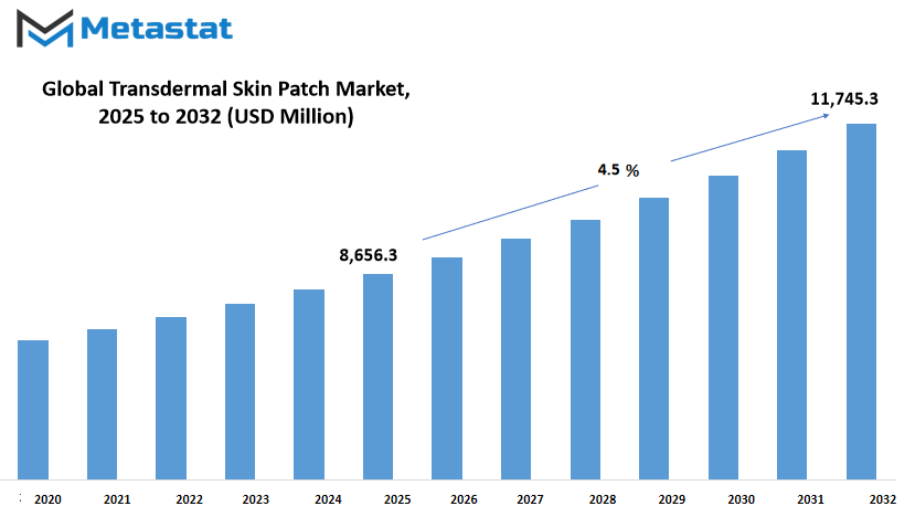
GROWTH FACTORS
The global transdermal skin patch market is expected to see great growth in the future as medical technologies keep developing and there's a growing need for more patient-centric ways of receiving treatment. One of the key factors that have been propelling this market has been the rising demand for non-invasive drug delivery systems. Physicians and patients alike are seeking solutions for reducing discomfort and enhancing compliance, and transdermal skin patches have been found to be an appealing solution. Transdermal skin patches release medicines via the skin in predetermined doses, thus bypassing injections or the use of drugs taken orally, which in some instances lead to gastrointestinal issues or inadequate absorption. Advances in technology in transdermal drug delivery have increased the potential of this market. The recent innovations have made it possible to manufacture patches that can deliver more complex drugs, like in the treatment of long-standing diseases and hormone imbalance.
It makes room for entry of enhanced and variable products. Enhanced and variable products expand the use of transdermal patches to all patient groups. Transdermal patches employed in hormone replacement therapy or chronic pain management are gaining popularity. This would equate to massive opportunity for input by innovative manufacturers that can adapt to such growth. End. Irritation and allergic reactions on the skin are major problems, as they may deter patients from using these patches daily. In addition, research, development, and regulatory approval cost are a major obstacle for firms to introduce new formulations to the market.
These issues can hold back market growth to some degree, particularly for minor players who might not be capable of overcoming these financial and operational problems. These however also offer much promise through heightened focus on breaching all obstacles of the aforementioned challenges as with better materials and their formulation. There is vast potential for widespread usage acceptance in the future outlook of the global transdermal skin patch market. The increased need for alternatives to the conventional drug delivery systems, particularly in the treatment of conditions like hormone replacement therapy and pain control, indicates further growth. As the remaining world health care systems move towards patient-focused methodologies, this function will only grow offering a convenient and efficient means to treat an infinite array of medical disorders. By sustained efforts to shift the current constraints and seize unfolding opportunities, this market is set to revolutionize healthcare solution delivery in the coming years.
MARKET SEGMENTATION
By Product Type
The global transdermal skin patch market is picking up pace with the new drug delivery method, where medicine administration is conducted via the skin so that there is a controlled release of medicine into the bloodstream. With advancements and innovations in healthcare, transdermal patches will lead the way in therapeutic interventions, simplifying treatment for patients and achieving what conventional methods such as oral medicines or injections cannot.
The market is divided according to product type, offering some of the patches that are used for various medical requirements. Such products are Single-Layer Drug-in-Adhesive Patches in which drug is incorporated on the adhesive layer. hence, it is a straightforward and well-designed structure with medication delivery reliability. In drug-in-adhesive patches with multiple layers, there exist certain multiple layers of adhesives that help in accelerating the rate of release from drugs for extended periods of time. These innovations enable healthcare practitioners to treat numerous patients for various patient requirements. The second key group is Matrix Patches in which the drug is distributed in a polymer matrix. The structure permits continuous diffusion of the drug and is thus ideal for long-term therapies. The other is Reservoir Patches which involve a liquid or gel reservoir, which can be accurately dosed. These are particularly beneficial in cases involving controlled release of the drug, thus facilitating patient safety and therapeutic effectiveness.
The market also encompasses Vapor Patches, which are mostly for the replacement of nicotine or pain. These patches present a new, innovative means of treating addiction or chronic pain. Microneedle Patches are a growing category. Very small needles pierce the skin surface to deliver drugs without causing pain. The possibilities in this technology are enormous in vaccines and other therapies that need accurate delivery to deeper layers of the skin. Transdermal patches are an essential part of healthcare today because of their adaptability and promise. Revolutionizing further, these patches could be used to cure many other ailments, and these could be the pillars of medicine in the years to come.
By Application
The global transdermal skin patch market is likely to flourish in the coming years because of technology advancement and growing demand for non-invasive drug delivery. The new method makes it possible for medicine to be absorbed by the skin and consequently delivering controlled dosing of drugs to the blood. No injection or oral administration is needed; it is more convenient and comfortable for the patient. As medicine continues to develop, this market will have an essential function in enhancing outcomes of treatment and patient compliance. One of the most important uses of transdermal skin patches is for pain relief.
For people experiencing chronic pain, this delivery method is a long-lasting way to achieve relief from the peaks and troughs of conventional medication. This technology has also been advantageous to hormone replacement therapy, where it is enabling continuous delivery of hormones to patients who have conditions like menopause or hormonal disorders. It is also increasing its share in the market to help stop smoking by providing nicotine at controlled dosages to help individuals quit smoking more effectively. Another area where there is much promise is in cardiovascular disease management. Patches release medications that control blood pressure or prevent heart-related complications. Neurological diseases like Parkinson's Disease have also benefited with transdermal use, giving hope for better symptom control. Patches can also manage motion sickness and nausea, making them a convenient option for tourists or chemotherapy patients. Transdermal patches are being used more and more for dermatological use, particularly in cosmetic treatments and acne treatment. The patches provide site-specific therapy with less side effect and more effective treatment of the skin conditions. Another significant field is diabetes management, and insulin delivery patches offer a less painful and more convenient option for patients who were previously injecting insulin.
Another possible use under development is the use of such patches on chronic diseases so that its functionality can be used in a larger patient base. More and more, tremendous pressure is put on drugs for personalized medication, where drug delivery can be properly individualized using these patches. Constant innovation in such products is expected to assist in addressing even greater issues of drug permeability, thus treating much more complex ailments.
The global transdermal skin patch market appear encouraging because, with the promise of revolutionizing healthcare provision through enhanced quality of life for millions of people worldwide, this new method may soon be a standard part of cutting-edge medicine, transforming treatment regimens in most fields.
By End-User
The global transdermal skin patch market is Likely to Develop at a Massive Scale in the Future Transdermal Patches, or patches through which drugs or other medication may be administered via skin, are becoming increasingly popular because of convenience and efficiency. Since the medical field is becoming more advanced, its need for this patch in the market has been thought to rise day by day due to these patches offering control drug delivery without injection and oral ingestion. This shall be worldwide and shall have a long duration in this health department. The most influential factor in the growth rate of the market is its high acceptance within the majority of medical institutions.
Hospitals and clinics, being the primary centers of care, are likely to use more transdermal patches with their ease of application and long-term therapeutic potential. These patches are also of significant value in the treatment of chronic diseases, like diabetes, which is typified by consistent medication for patients. To medical practitioners, the transdermal skin patch appears to be an appealing option since, with such a system, drugs can be dispensed without too much injection and monitoring. At the same time, home care facilities more and more become a significant component of the delivery of healthcare, which serves to enhance the demand for the transdermal skin patch. Since more patients are opting for home care compared to the conventional hospital visit, these patches prove to be an easy and effective way of treating conditions at home for patients.
For example, for less mobile or chronically ill individuals, the option of being able to put on the patch and take medicine without having to venture out is a big plus. Pharmacy and drugstore retailers will lead the way to the future in the global transdermal skin patch market. The pharmaceutical retail industry will continue to expand only, making these patches more available in drugstores, thereby making them even more accessible to patients. Besides, online pharmacies will distribute the market even wider with their emergence since, from now on, patients could buy skin patches with transdermal medication in direct sale from home.
As buyers and healthcare professionals look for easy modes of selling and dispensing drugs, online purchasing is bound to take this trend further, promoting the growth of the market. In the future, the global transdermal skin patch market will continue to grow with technological developments and rising demand for non-invasive medication. More patients in the future will look for efficient and easy means of controlling their health, and the market for transdermal skin patches will increase and create new avenues for patients and healthcare providers alike.
|
Forecast Period |
2025-2032 |
|
Market Size in 2025 |
$8,656.3 million |
|
Market Size by 2032 |
$11,745.3 Million |
|
Growth Rate from 2025 to 2032 |
4.5% |
|
Base Year |
2024 |
|
Regions Covered |
North America, Europe, Asia-Pacific Green, South America, Middle East & Africa |
REGIONAL ANALYSIS
The global transdermal skin patch market expected to gain mainly from this development owing to medical technologies and constantly increasing demand for noninvasive drug delivery systems over a broad geographic area with opportunity and challenge directly influencing the overall growth dynamism.
The North American market is underpinned by strong healthcare infrastructure and significant investment in research and development. The U.S., Canada, and Mexico are the principal drivers of growth within the region. The U.S. is driving growth due to a robust pharma industry and the pressure for innovative medical solutions from consumers. Canada and Mexico are making significant investment in expanding healthcare access, which is adding to overall growth in the region.
Europe also comprises an important portion of market growth. The UK, Germany, France, and Italy have robust healthcare systems and ongoing efforts to enhance more sophisticated drug delivery technology. The growth of Europe is also supported by favorable government policies aimed at enhancing patient outcomes. The region's population is mixed, making it an experimental ground for new formulations, so that solutions are created to address diverse healthcare needs. The Rest of Europe's smaller markets are contributing to the region's potential as it moves slowly towards embracing high-level medical products. The Asia-Pacific region is anticipated to grow with major percentages owing to its huge and diversified population base. India, China, Japan, and South Korea are the prime drivers in this growth. Increased chronic diseases coupled with enhanced awareness of contemporary healthcare solutions are fueling demand for transdermal skin patches. China and India are also emerging as significant manufacturing and consumption hubs owing to cost-effective production facilities and investments in health.
Opportunities for market growth exist in South America under the leadership of Brazil and Argentina. Both nations are ever expanding the accessibility of health care and bringing new products to their markets in relation to the needs of the population. The remaining countries of South America are also developing strength as healthcare infrastructure expands.
Middle East & Africa region provides a mixed market composition, with operations in the majority of the GCC nations, Egypt, and South Africa fueling progress. Economic growth as well as investment in newer solutions are propelling such gains in such regions. Rest of Middle East & Africa would be an emerging sector whereby health care would emerge incrementally.
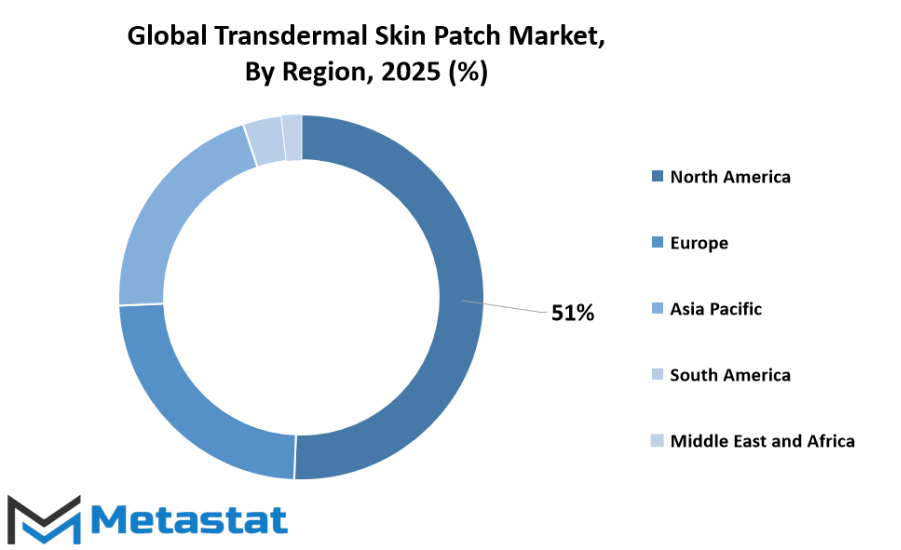
COMPETITIVE PLAYERS
The global transdermal skin patch market is anticipated to grow immensely in the years to come as innovations in healthcare technology and increased demands for emerging drug delivery systems increase. The market caters to all various fields of therapeutic uses, from pain relief to hormonal imbalance and neurological disease. The comfort and non-invasive state of transdermal patches have positioned them as the desirable alternative to conventional oral and injectable drugs, which patients desire in controlled and uniform medication delivery. In the future, the competitive market for the industry will be most likely highly dynamic, where a number of major players dictate the development.
Leaders like Hisamitsu Pharmaceutical, Novartis, and Mylan are first-line manufacturers that have been leveraging their extensive R&D capabilities to create patches that are in demand by diverse medical sectors. For instance, Hisamitsu Pharmaceutical has been leading the way in painkiller patches, while Novartis has been significantly advancing chronic diseases treatment such as Parkinson's disease. It is expected that this phase of innovation will be on a higher slope as the companies concentrate more on solutions that help the patient. The other driving force for transdermal patches will be growing incidence of chronic disease and an aging population. The more health systems across the globe are coping with such changes, the more the demand will be for giving effective treatment that is also easy to administer.
Finally, continued advances in material sciences and bioengineering should lead to better patches with improved permeability, extended wear times, and fewer side effects. The improvements could bring new transdermal patch applications to new therapeutic indications and thereby enable more customized medicine. The major players in the global transdermal skin patch market, including Bayer AG, Purdue Pharma L.P., and GlaxoSmithKline plc, are always seeking mergers and acquisitions to maintain their position in the market. Pharmaceutical firms in partnership with technology firms may soon come up with smart patches that can monitor health metrics and adjust dosages in real-time. Such innovation has transformative potential, and this is perhaps the most compelling space for investors and healthcare providers to watch.
The regulatory environment will have a critical role in shaping the evolution of the industry, so that safety and efficacy are obtained together with innovation. Firms like UCB S.A., Boehringer Ingelheim, and Endo Pharmaceuticals will have to be closely working with regulatory authorities in the issues they encounter in bringing new products to the marketplace. The future of the global transdermal skin patch market appears radiant, with ongoing innovation guaranteeing to revolutionize drug delivery and enhance patient results worldwide.
Transdermal Skin Patch Market Key Segments:
By Product Type
- Single-Layer Drug-in-Adhesive Patches
- Multi-Layer Drug-in-Adhesive Patches
- Matrix Patches
- Reservoir Patches
- Vapor Patches (Nicotine, Pain Relief)
- Microneedle Patches
By Application
- Pain Management
- Hormone Replacement Therapy
- Smoking Cessation
- Cardiovascular Health
- Neurological Disorders (e.g., Parkinson’s Disease)
- Motion Sickness and Nausea
- Dermatology (Cosmetic Applications, Acne Treatment)
- Diabetes Management (Insulin Delivery)
- Other Chronic Conditions
By End-User
- Hospitals and Clinics
- Home Care Settings
- Pharmaceutical Retailers
- Online Pharmacies
Key Global Transdermal Skin Patch Industry Players
- Hisamitsu Pharmaceutical
- Novartis
- Mylan
- Mundipharma
- Henan Lingrui Pharmaceutical
- Bayer AG
- Purdue Pharma L.P.
- Teva Pharmaceutical Industries Ltd
- UCB S.A.
- Endo Pharmaceuticals
- GlaxoSmithKline plc
- Boehringer Ingelheim
WHAT REPORT PROVIDES
- Full in-depth analysis of the parent Industry
- Important changes in market and its dynamics
- Segmentation details of the market
- Former, on-going, and projected market analysis in terms of volume and value
- Assessment of niche industry developments
- Market share analysis
- Key strategies of major players
- Emerging segments and regional growth potential



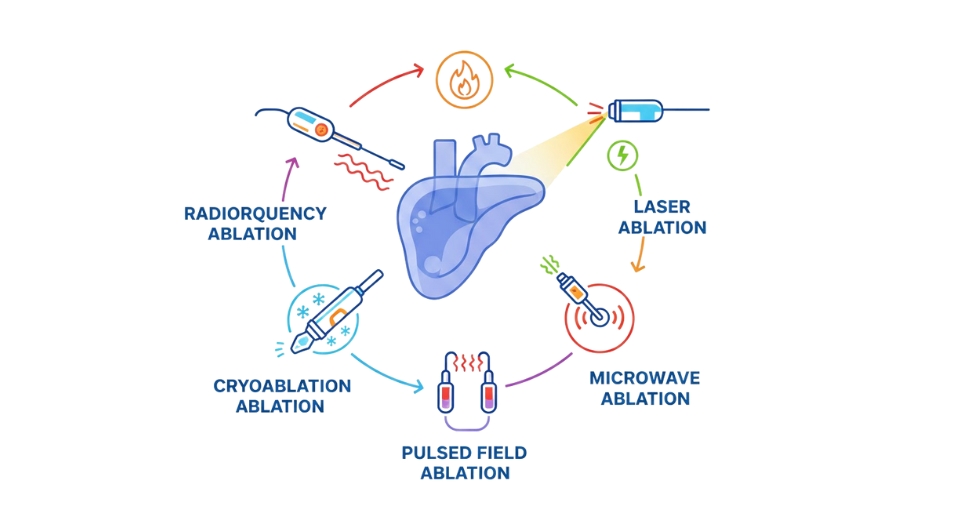

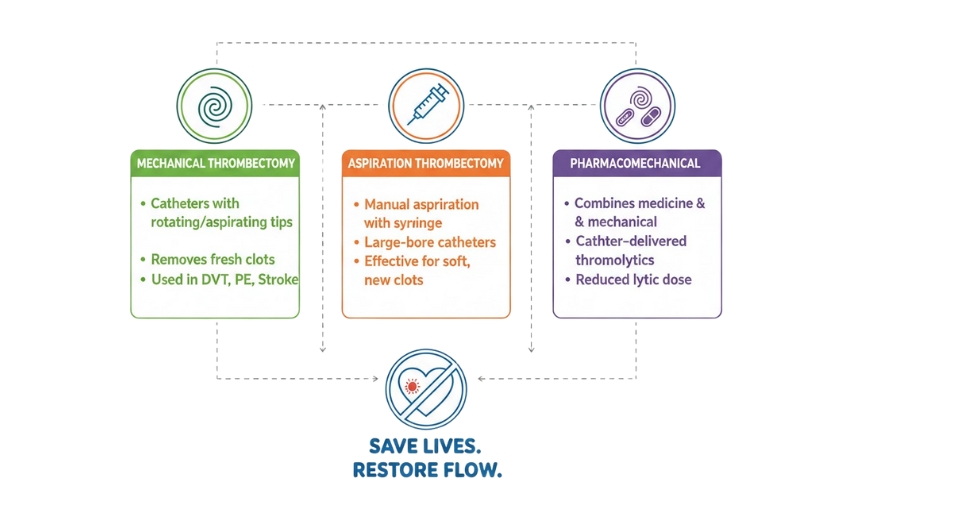
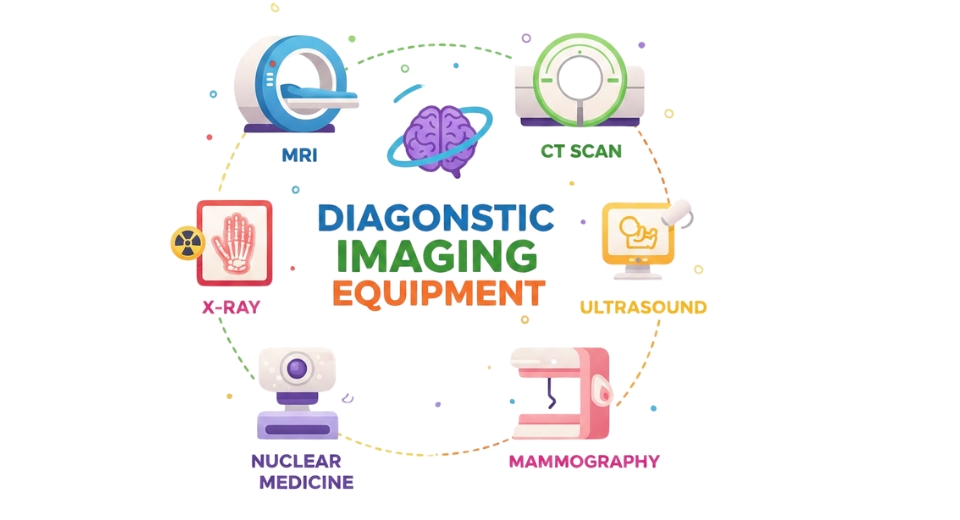

 US: +1 3023308252
US: +1 3023308252






